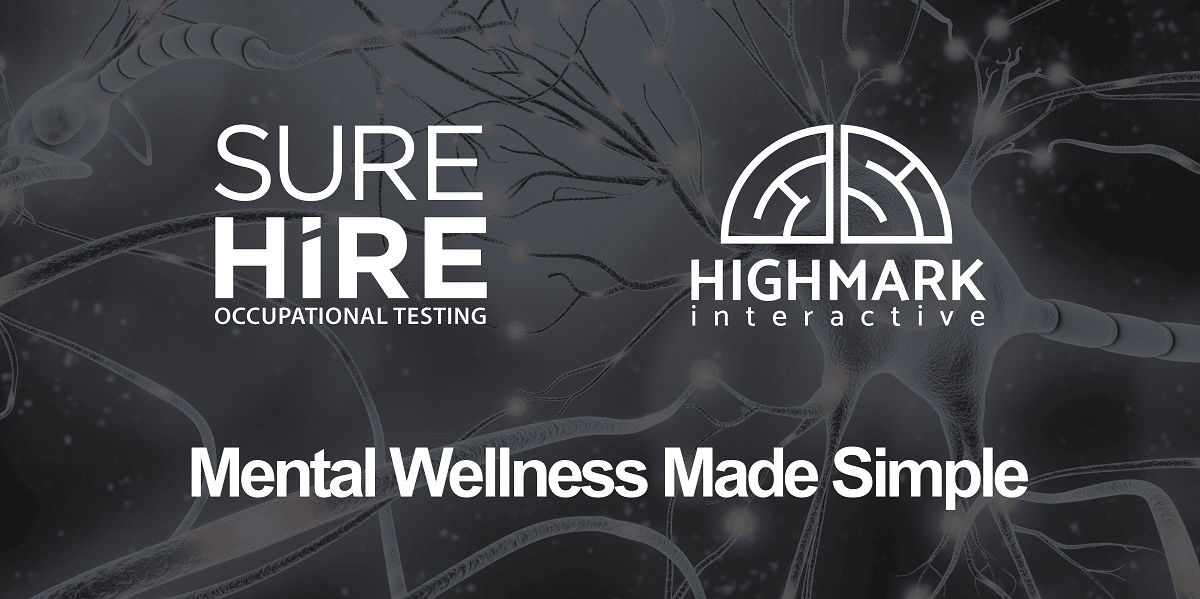TAKEAWAY: As an employer, it’s important to create a workplace that is inclusive so that all employees are set up for success. Here’s what you need to know about facilitating an inclusive work environment and accommodating deaf and hard-of-hearing employees.
Jump Ahead
By: Elly McGuinness
Disabilities are wide-ranging, and many are invisible. Each type of disability requires a unique approach to workplace accommodation, and some, such as hearing impairment, are less obvious than others. Approaches to accommodating employees with physical disabilities in the workplace might be more apparent. For example, installing ramps next to steps helps accommodate employees with reduced mobility. Just as there are ways to accommodate employees with physical disabilities, employers must understand how to facilitate an inclusive environment for deaf or hard-of-hearing employees. Employers can explore several avenues to set deaf or hard-of-hearing employees up for success, from workplace policies to practical accommodations, support, and resources.
Considerations for employers
Employers must recognize that not all employees with a hearing impairment will require accommodation. Those who require accommodation will not necessarily require the same accommodations as other deaf and hard-of-hearing employees. Similarly, some employees may only need one accommodation while others may need several. Essentially, every employee is an individual with different needs. Employers must also understand how to navigate deafness and hearing impairments in the workplace in line with the Americans with Disabilities Act (ADA).
7 ways to set hard-of-hearing employees up for success in the workplace
The following guidelines can help promote inclusivity and accommodate hard-of-hearing employees.
1. Workplace policies
Employers can start by reviewing workplace policies to ensure they support and protect workers with disabilities. Different types of disabilities should be considered, including those related to hearing loss. Policies should address any factors that could adversely affect workers with a hearing impairment and highlight potential strategies and solutions. For example, a noisy work environment can negatively impact a worker with a hearing impairment. Therefore, employers should review policies and procedures in this area.
Employers should inform employees about worker accommodation policies, and must also ensure that employees are aware of privacy rights regarding the disclosure of medical information.
2. Employer-employee communication
Communication is a crucial element of success in any workplace. It can be of critical importance when facilitating an inclusive environment for hard-of-hearing employees. When an employer knows about an employee’s hearing impairment or has reason to believe that performance-linked problems are related to a hearing impairment, they can ask the employee questions about the issues they are having. Ask the employee what hearing limitations they experience in the workplace and what accommodations they may need to perform their job safely and effectively.
3. Communication within the workplace
Communication training with management and other team members is also imperative. Advise employees on the best ways to communicate with a deaf or hard of hearing employee. Employees should be aware of the ways they can help improve communication. Examples include speaking one at a time and standing face-to-face for conversations since a hard-of-hearing employee may rely on lip-reading. Management and employees leading training sessions or meetings need to understand the importance of speaking while facing the audience rather than turning their back to speak, even if they’re referencing some type of screen or board.
4. Assistive technology
There are many assistive technology options for accommodating deaf and hard-of-hearing employees. The technology used should be specific to the individual and their needs. For example, some hard-of-hearing employees may have no problem with face-to-face communication. However, reduced clarity and an inability to lip-read can make telephone communication challenging. Captioned telephones, a telephone headset, or video telephones using a video relay service (VRS) are all possible solutions to this problem.
Safety should be at the forefront of any organization, so ensure that workplace technology caters to deaf and hard-of-hearing employees in emergencies. Employees can use a vibrating pager for emergency alerts while flashing lights indicate exit directions.
In the office, team members can emphasize visual and written communication. Install visual notifications on smartphones and computers and send text communications when required. Deaf and hard-of-hearing employees may benefit from assistive listening devices or voice recognition software to translate spoken words into electronic text. For training and upskilling, use closed captions on videos to help hard-of-hearing employees fully participate in sessions.
5. Visual aids in the workplace
Apart from technology, visual aids can go a long way toward assisting employees with a hearing impairment. Simple accommodations in meetings and training sessions can go a long way. Take a moment to consider the various potential visual aids that will help ensure a positive experience for hard-of-hearing employees such as handouts, flipcharts, and written materials.
6. Support personnel
Deaf and hard-of-hearing employees may benefit from support personnel in specific instances. Employees could use a buddy system to help facilitate the straightforward execution of emergency procedures for emergencies. Other situations may require a sign language interpreter. Examples include during large conferences or social events. Some events may not enable the employee to have a direct line of sight to the speaker, or they may be too far away. Social events could bring additional background noise that presents challenges for the employee. In these situations, a sign language interpreter can help ensure a deaf or hard-of-hearing employee receives the accommodation they need for full participation.
7. Other adjustments such as seating positioning and optimal lighting
Employers can make adjustments to the workplace environment to help accommodate employees with a hearing impairment. Focus these strategies on reducing noise levels and enhancing the visual environment. Allow hard-of-hearing employees to work in a quiet area in the workplace, for example, away from the noisier entry, exit, or reception areas. During meetings and training sessions, ensure they have an unobstructed view of the speaker. Optimal lighting in the workplace will help maximize the effectiveness of workplace visuals. Employers can also consider altering job duties to accommodate deaf and hard-of-hearing employees.
Additional resources and support for accommodating employees with a hearing impairment
Several resources can help employers take the next steps in accommodating deaf and hard-of-hearing employees. For example, SureHire’s fitness-to-work testing program allows employers to understand an employee’s overall health status and provides recommendations on accommodations where necessary. The Job Accommodation Network has a selection of resources for accommodating employees with hearing impairment. Employers may also want to consider using an Employee Assistance Program (EAP) to help employees deal with any challenges related to their hearing impairment.
For related reading, find out how to accommodate chronic illness in the workplace.

Support Your Employee’s Mental Wellness with EQ Solutions
As more employees are beginning their return to office plans, the need for mental health support is crucial. Only 23% of Canadian workers feel comfortable approaching their employer about their mental health.
Services like EQ Solutions work towards building employee resilience and improving mental health and wellness in the workplace.
You May Also Be Interested In…
- Do You Have Reasonable Suspicion?
 Employers cannot initiate reasonable suspicion testing without first going through the 5-step process. Reasonable suspicion training provides critical information about how to initiate reasonable suspicion testing, including the 5-step process and other tools that employers can use to help manage the misuse of alcohol and drugs in the workplace.
Employers cannot initiate reasonable suspicion testing without first going through the 5-step process. Reasonable suspicion training provides critical information about how to initiate reasonable suspicion testing, including the 5-step process and other tools that employers can use to help manage the misuse of alcohol and drugs in the workplace. - An Employer’s Guide: What You and Your Employees Need to Know About DOT Drug & Alcohol Testing
 When implementing or maintaining DOT Drug & Alcohol testing, there are key areas that employers should consider.
When implementing or maintaining DOT Drug & Alcohol testing, there are key areas that employers should consider. - SureHire Occupational Testing Acquires COHR Health: A Positive Step Towards Safe, Healthy, Productive Workforces and Communities
 We are thrilled to announce that today, May 6, 2024, SureHire Occupational Testing has officially acquired COHR Health, a well-known leader in occupational health services. Read on…
We are thrilled to announce that today, May 6, 2024, SureHire Occupational Testing has officially acquired COHR Health, a well-known leader in occupational health services. Read on… - Occupational Testing Use Case – Mining
 In this case study, we will explore how mining companies can use various types of occupational tests to reduce Total Recordable Incident Rates (TRIR) long term.
In this case study, we will explore how mining companies can use various types of occupational tests to reduce Total Recordable Incident Rates (TRIR) long term. - 9 Strategies to Keep Workers Cool on Drilling Sites During Hot Summer Months
 This article delves into strategies to keep workers cool and safe on drilling sites during the hot summer months.
This article delves into strategies to keep workers cool and safe on drilling sites during the hot summer months. - Hearing Conservation Basics: How to Manage Occupational Noise
 Learn how to proactively mitigate occupational noise risks and help prevent NIHL among workers.
Learn how to proactively mitigate occupational noise risks and help prevent NIHL among workers.

